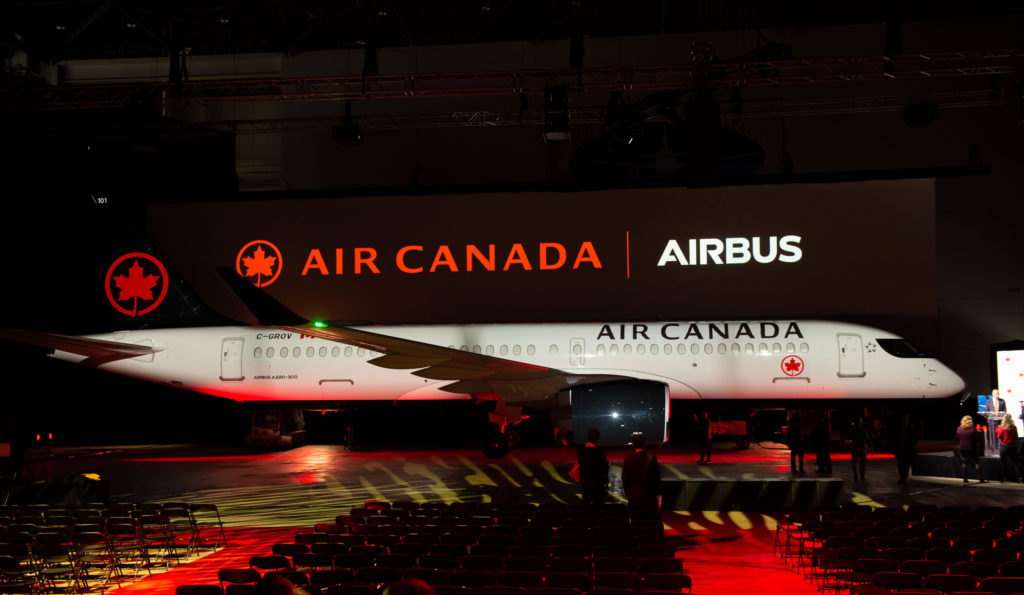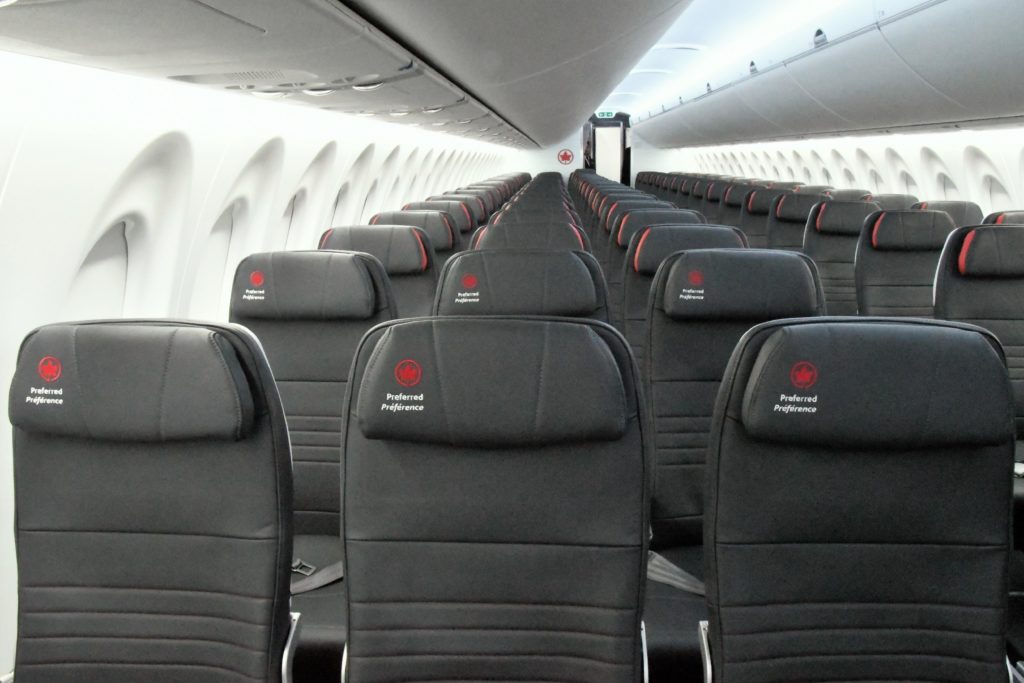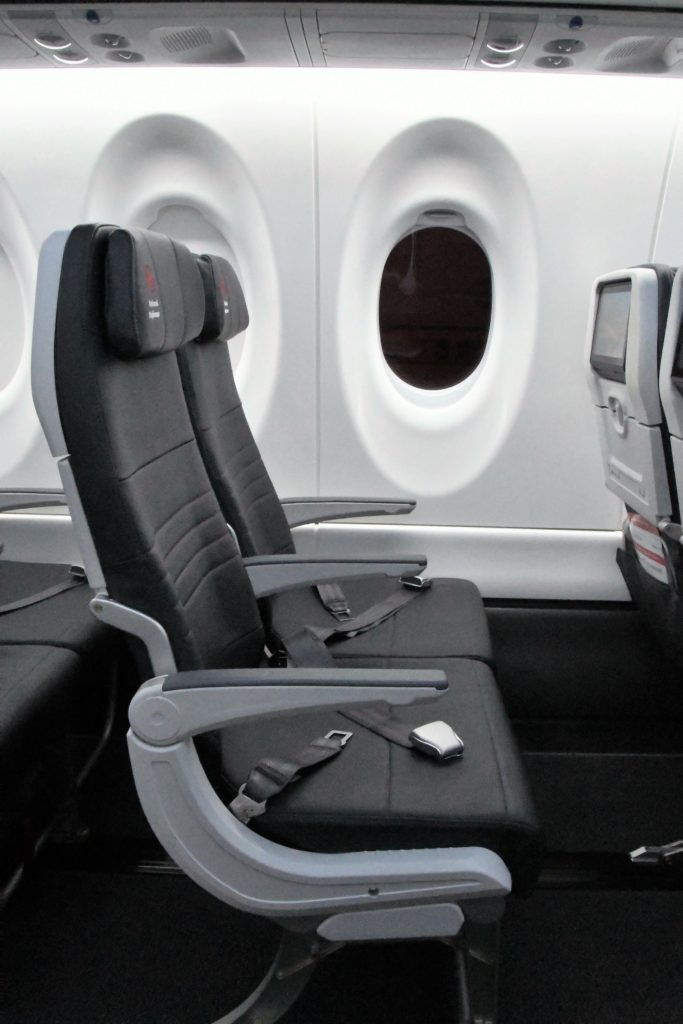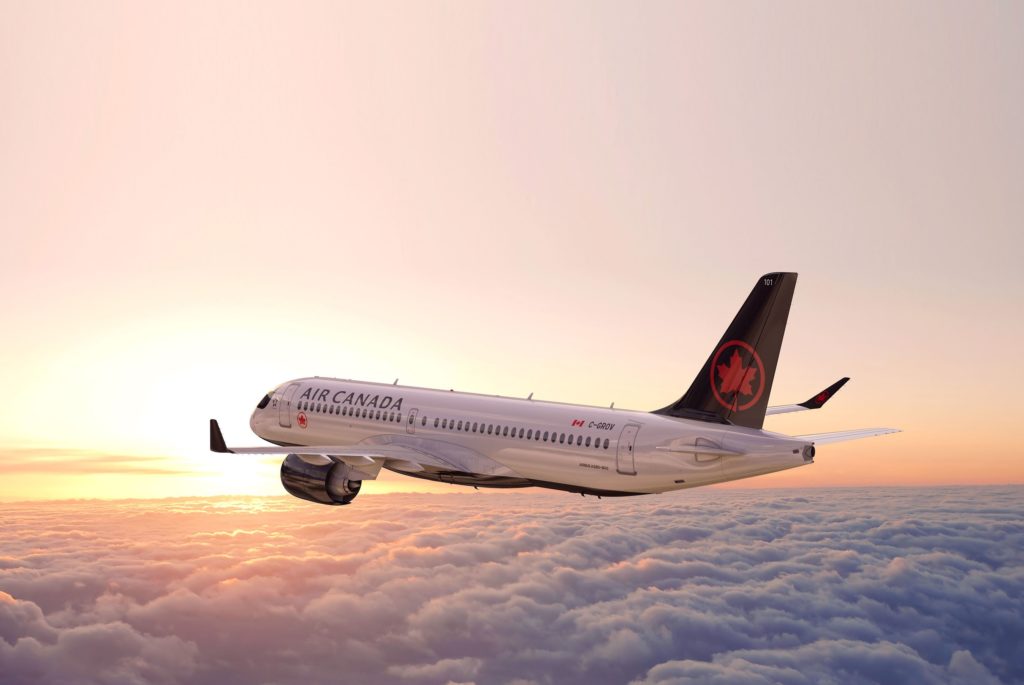Estimated reading time 7 minutes, 9 seconds.
On Jan. 15, several hundred members of the Air Canada family and guests gathered in a hangar at Dorval, Que., to celebrate and inspect the latest addition to the carrier’s fleet – an Airbus A220-300. Air Canada’s relationship with the type began nearly four years ago, when it signed a letter of intent (LOI) to purchase 45 examples (then known as the Bombardier CS300) on Feb. 27, 2016. The LOI was finalized on June 28 that year and included options for an additional 30 units.

The company’s first copy (serial number 55067, C-GROV) first flew on Dec. 11, 2019 at Mirabel, Que., and was delivered to Dorval nine days later. Since then, it has flown numerous familiarization and training missions.
On Jan. 16, Air Canada will operate its first A220 revenue flight, when AC317 departs Montreal for Calgary. For the next while, the aircraft will serve that city-pair on weekdays and shuttle between Montreal and Toronto during weekends.
What’s so exciting?
Any new airliner that can attract customers and operate economically is bound to generate revenues and produce profits for its operator. That is why Air Canada’s A220-300 is so attractive. A survey of its cabin reveals a comfortable environment. Up front, the business class cabin has 12 seats (three rows, four abreast) that feature a 37 inch/94 cm pitch. Further aft, the economy class cabin’s 125 seats (25 rows, five abreast) each have a 30 inch/76 cm pitch. At 19 inches, the Y-class seats are the widest in AC’s fleet – albeit one inch wider than the rest. The spacious feel to the entire cabin is due to its wider aisle, windows that are 50 per cent larger than those of an A320, and 15 per cent bigger overhead bins. When you consider the new Panasonic in-flight entertainment system that features a 12-inch screen in the economy cabin and mood lighting, you sense that some passengers may not wish to deplane at their destination.

Financial folks will be pleased with the A220-300’s impressive operating cost metrics. Its new Pratt & Whitney PW1500G geared turbofan engines, also produced in Mirabel, enable the airplane to burn 20 per cent less fuel per mile flown compared to previous generation models. The jet also produces 20 per cent fewer CO2 emissions and has as much as a 50 per cent smaller noise footprint. It is an exemplary corporate citizen.
A key attribute of the aircraft, is its impressive range. Thanks to its less thirsty engines, an A220-300 can fly 3,200 nautical miles (nm). That is 33 per cent further than the 2,400 nm that a similarly-sized Airbus A320-200 can travel.
Air Canada’s intentions

By May 4, the airline expects to have received eight A220-300s. That day it will be using the aircraft to initiate two city-pairs: Montreal – Seattle, WA and Toronto – San Jose, Calif. With stage lengths/block times of 1,985 nm/5:50 and 1,950 nm/5:30, respectively, these new routes will permit the aircraft to demonstrate its transcontinental range capability.
By the end of 2020, Air Canada expects to have 17 units in service. It plans on utilizing the airplane on new long and thin routes that can’t support larger models; to increase frequencies on key spokes into its hubs at Toronto, Montreal and Vancouver; and to provide appropriate gauge on seasonal services. Other potential new city-pairs include Vancouver – Halifax and Vancouver – Washington, D.C. Regardless of how it may ultimately be deployed, the A220-300 is expected to act as a market share disruptor by diverting competitors’ passenger traffic to Air Canada.
A late bloomer matures

What began as Bombardier’s new Commercial Aircraft Program in early 2004 has evolved into an extremely successful airliner in the 100-150-seat niche. By the end of 2019, 600 A220s had been ordered. Included in that tally were 95 A220-100s and 505 of the larger A220-300s.
Aircraft delivered by the end of 2019 totalled 105, including 37 A220-100s and 68 A220-300s. The A220-100s owners included Delta (28) and Swiss International (nine). A220-300 owners were Air Canada (one), Air Baltic (22), Air Tanzania (two), Egyptair (seven), State Transport Leasing of Russia (six), Korean Air (10) and Swiss International (20).
Sizeable orders for A220-300s from Air France (60) and JetBlue Airways (70) reinforce the enlightened decisions made by others before them. As a result of the growing interest in the aircraft, production is forecast to increase. During 2019, 48 A220s were delivered from the Mirabel facility. The Mirabel plant has a maximum annual capacity of 120 units. The new facility in Mobile, Ala., is gearing up to eventually produce 48 A220s per year for U.S. buyers.
Since July 1, 2018, the A220 program has been owned by Airbus SE (50.01 per cent), Bombardier Inc. (33.55 per cent) and Investissement Quebec (16.44 per cent). Given the challenges the program has overcome, it is gratifying to see this new Canadian aerospace icon being properly recognized by the global airline industry. As the largest Canadian airline places the largest Canadian designed and built jet aircraft into service, it is a remarkable way for the Canadian aviation industry to start the new decade. In fact, some are saying that “2020 will be the year of the A220”.









So heartening to see this well designed and engineered airplane start a path to success. A great Canadian point of pride for me. Also still angry at Boeing for their churlish attempt to destroy the program. As the saying goes “revenge is a dish best served cold”.
Bravo to all involved.